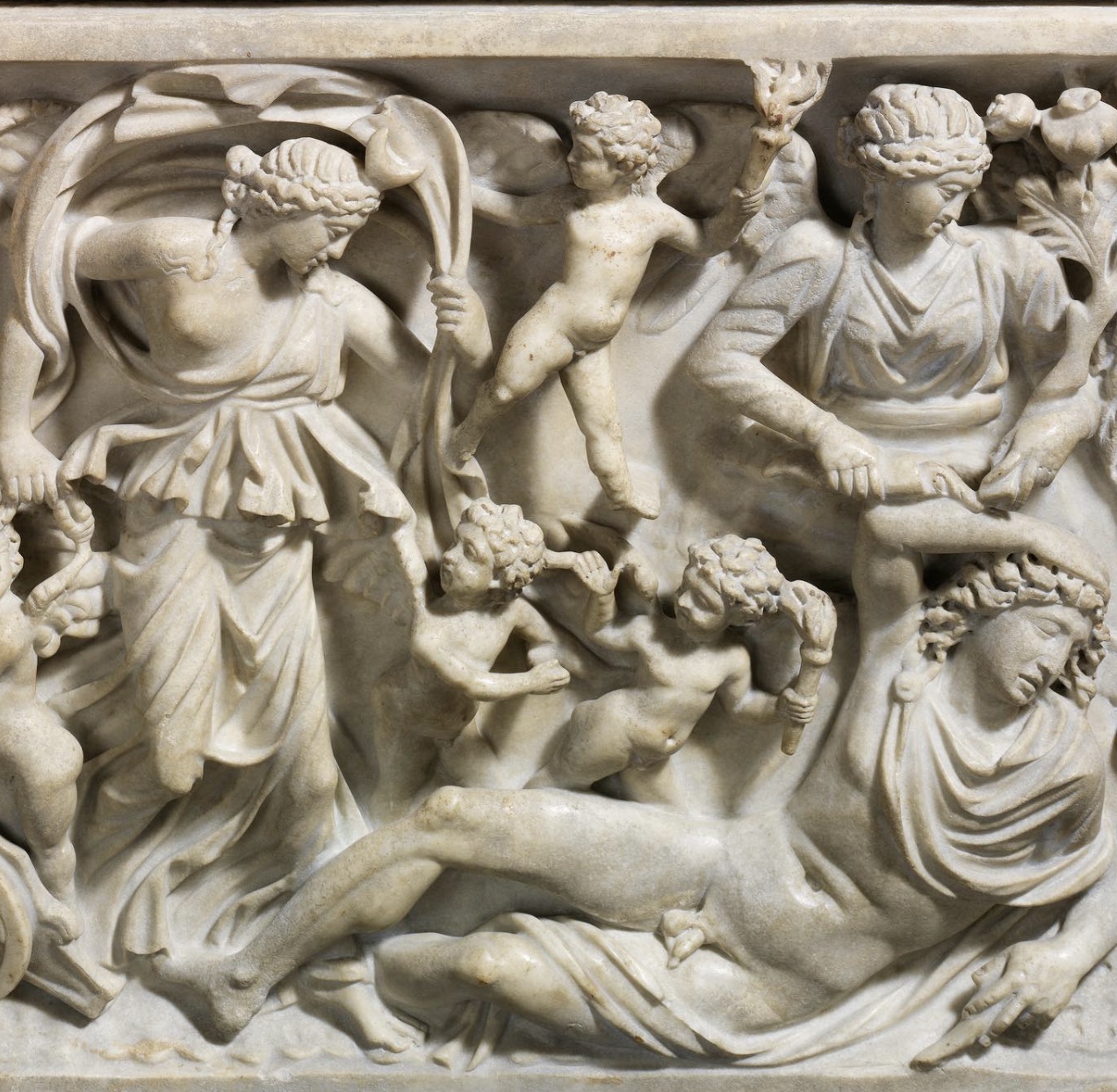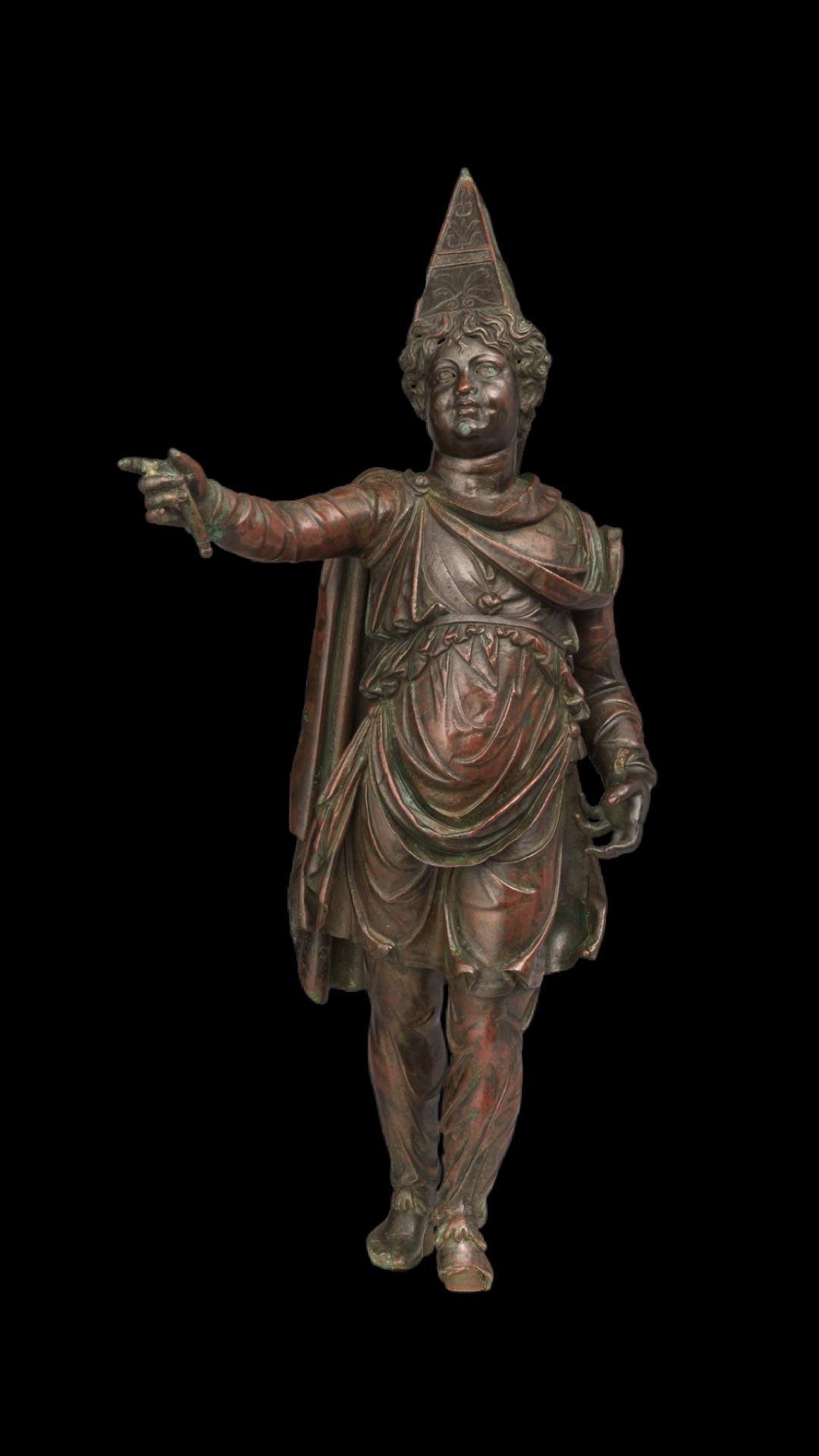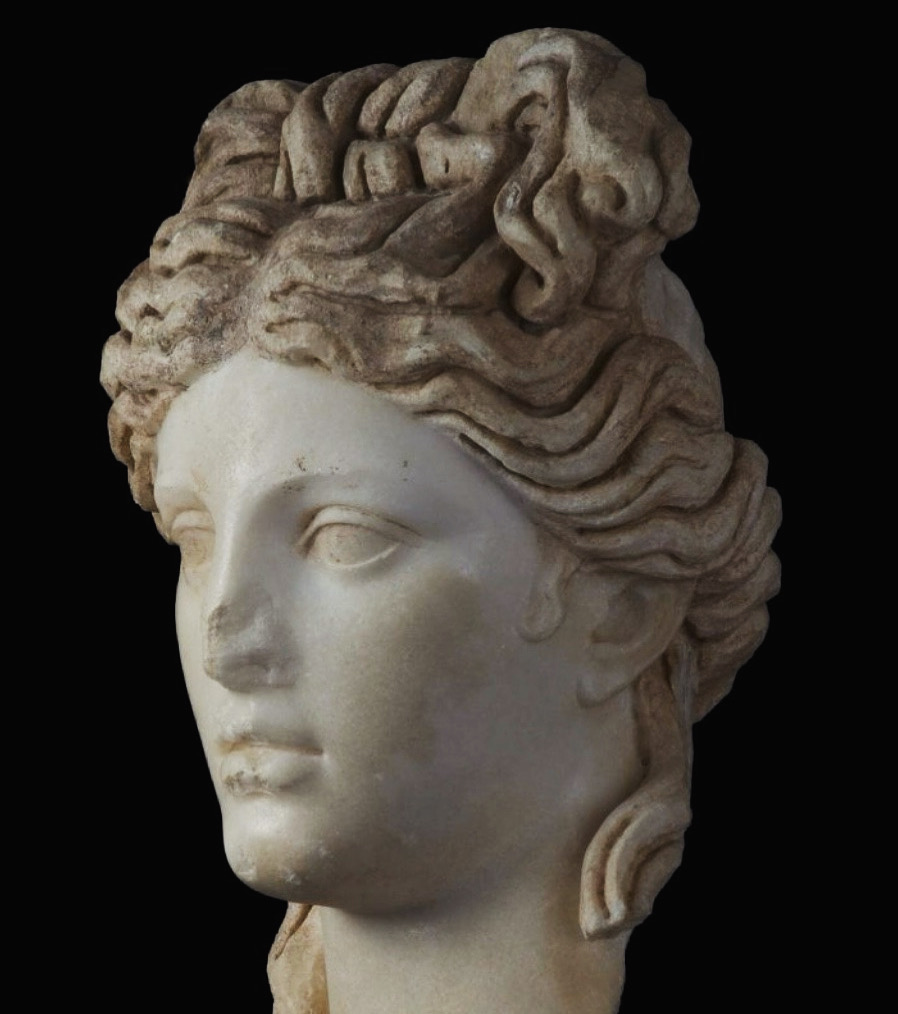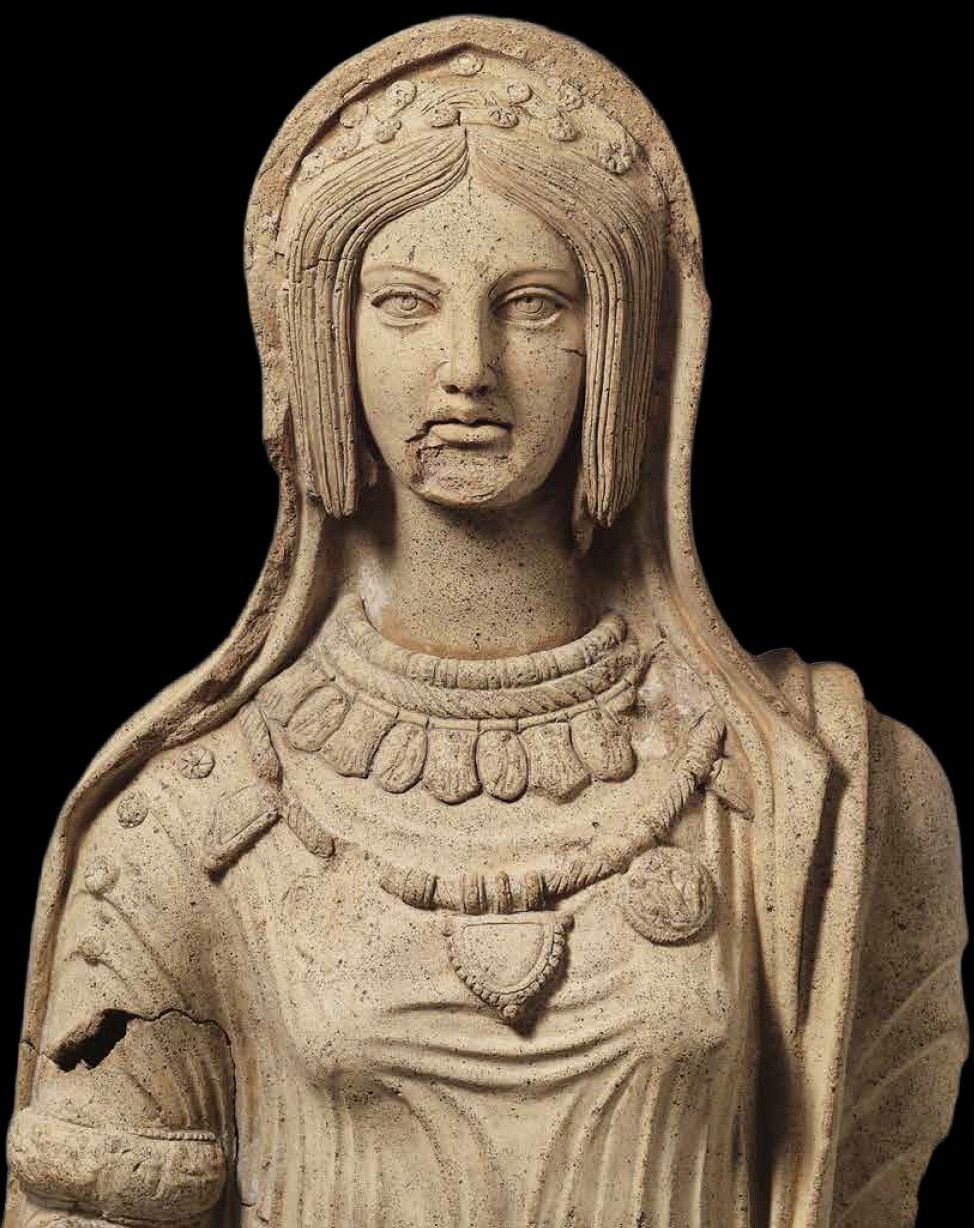Anchoring one side of the Met’s luminous sculpture court is an enormous sarcophagus with a quintessentially Roman take on eternal love.
Flanked by two imposing lion heads and surrounded by a bucolic retinue, the main scene is mythological, with Selene (moon goddess) being pulled across the sky in a chariot, gazing down on her beloved Endymion. Their love affair was not the most conventional: when she spied the young rustic, Selene knew it was a doomed romance – she was immortal while he was destined to wither and die after a few good years of nocturnal trysts.
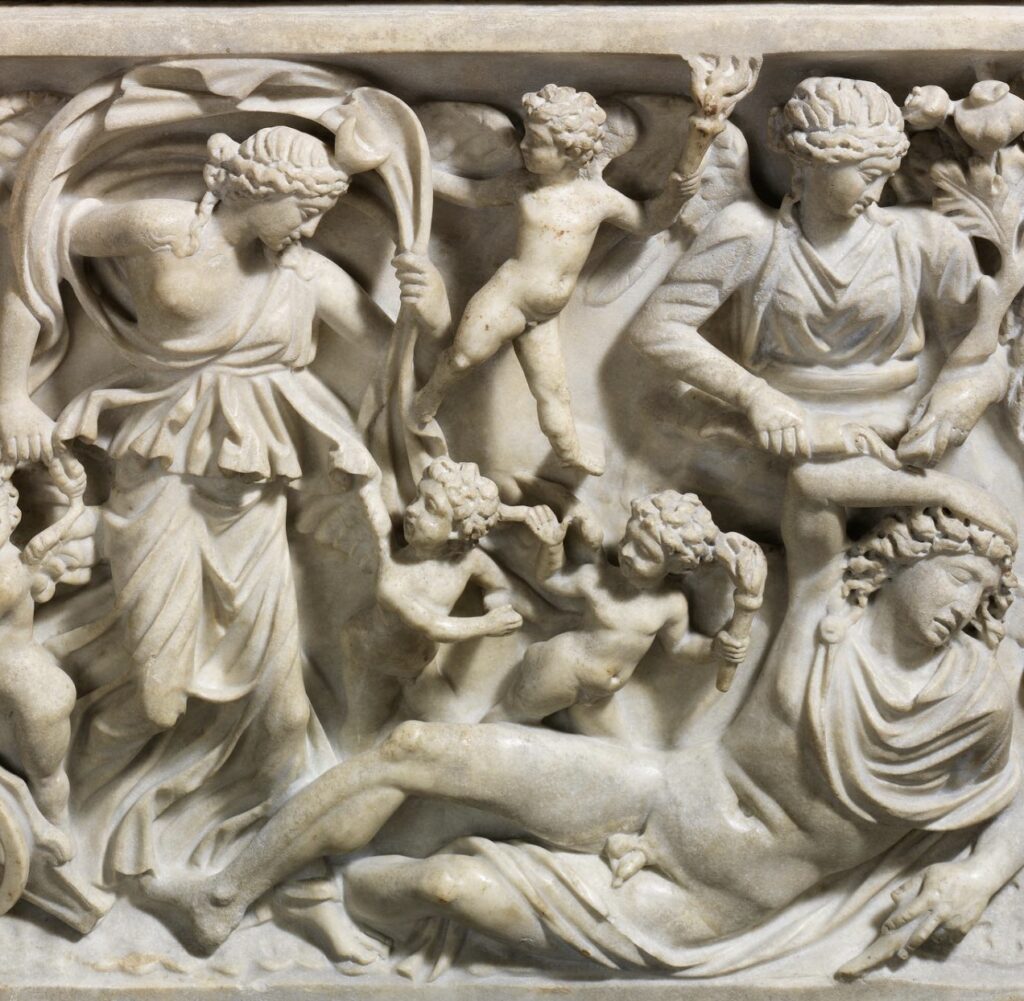
She petitioned Zeus to intervene and his questionable solution was to keep Endymion at the peak of his youthful beauty but permanently asleep, so that Selene could visit him each night. One wonders just how consensual the arrangement was and perhaps it doesn’t quite stand up to 21st century expectations. In this delectably carved 3rd century rendition, a woman stands behind the reclining youth, preparing to pour a sleeping potion down his throat.
It is not always abundantly clear what mythological scenes on sarcophagi meant to the person who commissioned them, but the take away meaning in this example seems fairly straightforward. We know (from inscription) that a woman named Aninia Hilara dedicated it to her mother Arria who died at the ripe old age of 50 years and 10 months. The stern matronly portrait on the lid presumably is Arria herself. It could have allusions to conjugal bliss Arria experienced during her lifetime, or allude more broadly to the bonds of familial love that would remain eternally unbroken.
‘Till death do us part, young man, and that death might be a very long thing coming!

